Vote on our poll to the left. The great moments in open water swimming history are listed chronologically below:
 1. British Matthew Webb’s 21 hour 45 minute first successful crossing of the English Channel in August 1875. His courageous 21 hour 45 minute swim was an accomplishment of the impossible and captured the world’s attention.
1. British Matthew Webb’s 21 hour 45 minute first successful crossing of the English Channel in August 1875. His courageous 21 hour 45 minute swim was an accomplishment of the impossible and captured the world’s attention. 2. Hungarian Alfréd Hajós' gold-medal victory in the 1200-meter freestyle at the first modern Olympics in the 13°C (55°F) water of the Aegean Sea in April 1896. He famously said, "My will to live completely overcame my desire to win." His victory was the first true open water swim in Olympic history.
2. Hungarian Alfréd Hajós' gold-medal victory in the 1200-meter freestyle at the first modern Olympics in the 13°C (55°F) water of the Aegean Sea in April 1896. He famously said, "My will to live completely overcame my desire to win." His victory was the first true open water swim in Olympic history. 3. Establishment of the La Jolla Rough Water Swim in 1916 to showcase the beautiful seaside community north of San Diego, California. This swim by 7 men became an annual celebration of thousands along the California coastal lifestyle which other communities have followed over the subsequent decades.
3. Establishment of the La Jolla Rough Water Swim in 1916 to showcase the beautiful seaside community north of San Diego, California. This swim by 7 men became an annual celebration of thousands along the California coastal lifestyle which other communities have followed over the subsequent decades. [Photo of start]
 4. American Gertrude Ederle’s record-breaking 14 hour 39 minute crossing of the English Channel in August 1926. After being the first Olympic gold medalist to attempt the Channel, she was celebrated by one of New York City’s largest ticker-tape parades. She reportedly said, "People said women couldn’t swim the Channel, but I proved they could."
4. American Gertrude Ederle’s record-breaking 14 hour 39 minute crossing of the English Channel in August 1926. After being the first Olympic gold medalist to attempt the Channel, she was celebrated by one of New York City’s largest ticker-tape parades. She reportedly said, "People said women couldn’t swim the Channel, but I proved they could." 5. Creation of the Channel Swimming Association, including the establishment of specific rules and regulations, to govern English Channel swims in 1927. The rules set forth by this Association have had a profound influence on open water swimming governing bodies that were subsequently established.
5. Creation of the Channel Swimming Association, including the establishment of specific rules and regulations, to govern English Channel swims in 1927. The rules set forth by this Association have had a profound influence on open water swimming governing bodies that were subsequently established. 6. Canadian George Young’s 15 hour 22 minute victory in the January 1927 race across the Catalina Channel, completing the first crossing while winning US$25,000 over 101 competitors. The Catalina Kid was the only finisher in the Wrigley Ocean Marathon that helped usher in the era of big-money and notoriety to the sport.
6. Canadian George Young’s 15 hour 22 minute victory in the January 1927 race across the Catalina Channel, completing the first crossing while winning US$25,000 over 101 competitors. The Catalina Kid was the only finisher in the Wrigley Ocean Marathon that helped usher in the era of big-money and notoriety to the sport. 7. German Ernst Vierkotter’s victory in the first Canadian National Exhibition race in August 1927, winning US$30,000 for an 11 hour 45 minute 21-mile swim in Lake Ontario. His victory was an early big-money swim in a highly prestigious marathon race that was held annually until 1964.
7. German Ernst Vierkotter’s victory in the first Canadian National Exhibition race in August 1927, winning US$30,000 for an 11 hour 45 minute 21-mile swim in Lake Ontario. His victory was an early big-money swim in a highly prestigious marathon race that was held annually until 1964.  8. British Mercedes Gleitze’s first successful crossing in 12 hours 50 minutes of the 12.8K (8 mile) Gibraltar Strait between Spain and Morocco in May 1928. Her tenacity in the early years of channel swimming helped pave the way for many to follow.
8. British Mercedes Gleitze’s first successful crossing in 12 hours 50 minutes of the 12.8K (8 mile) Gibraltar Strait between Spain and Morocco in May 1928. Her tenacity in the early years of channel swimming helped pave the way for many to follow. 9. Irish Tom Blower’s 15 hour 26 minute first successful crossing of the 33.7K (21 mile) North (Irish) Channel between Ireland and Scotland in July 1947. His crossing was a breakthrough in cold-water marathon swimming.
9. Irish Tom Blower’s 15 hour 26 minute first successful crossing of the 33.7K (21 mile) North (Irish) Channel between Ireland and Scotland in July 1947. His crossing was a breakthrough in cold-water marathon swimming. 10. Establishment of the 3K Vansbrosimningen in central Sweden. The event has introduced and incorporated many elements of open water swimming now commonly found in local races from Asia to America.
10. Establishment of the 3K Vansbrosimningen in central Sweden. The event has introduced and incorporated many elements of open water swimming now commonly found in local races from Asia to America. 11. Establishment of the Traversata dello Stretto race in the Italian Strait of Messina in September 1954. This race, inspired by Giuseppe Dominici's 1930 crossing, is typical of many local coastal swims in the Mediterranean.
11. Establishment of the Traversata dello Stretto race in the Italian Strait of Messina in September 1954. This race, inspired by Giuseppe Dominici's 1930 crossing, is typical of many local coastal swims in the Mediterranean. 12. Inspiration for the 19.2K Rottnest Channel Swim when Gerd von Dincklage-Schulenburg first crossed the channel in 9 hours 45 minutes from Freemantle to Rottnest Island in Western Australia in January 1956. The swim inspired thousands and led to the establishment of the world’s largest open water swimming relay in March 1956.
12. Inspiration for the 19.2K Rottnest Channel Swim when Gerd von Dincklage-Schulenburg first crossed the channel in 9 hours 45 minutes from Freemantle to Rottnest Island in Western Australia in January 1956. The swim inspired thousands and led to the establishment of the world’s largest open water swimming relay in March 1956. 13. Argentinian Antonio Abertondo’s 43 hour 10 minute first double-crossing of the English Channel in September 1961. His mind-boggling, nearly two-day swim gave new meaning to staying power and opened the door to double-crossing and triple-crossing attempts in various waterways around the world.
13. Argentinian Antonio Abertondo’s 43 hour 10 minute first double-crossing of the English Channel in September 1961. His mind-boggling, nearly two-day swim gave new meaning to staying power and opened the door to double-crossing and triple-crossing attempts in various waterways around the world.  14. American Keo Nakama’s 15 hour 37 minute first successful crossing of the 42K (26 mile) Molokai Channel between Molokai and Oahu in Hawaii in September 1961. The former world record holder and NCAA/AAU/Pan American champion came out of retirement to cross a channel thought uncrossable. His effort helped motivate many adult swimmers to take up challenges in various waterways of the world.
14. American Keo Nakama’s 15 hour 37 minute first successful crossing of the 42K (26 mile) Molokai Channel between Molokai and Oahu in Hawaii in September 1961. The former world record holder and NCAA/AAU/Pan American champion came out of retirement to cross a channel thought uncrossable. His effort helped motivate many adult swimmers to take up challenges in various waterways of the world. [Photo by Ken Sakamoto]
 15. New Zealander Barry Devonport’s first crossing of the 30K (16 mile) Cook Strait in 11 hours 20 minutes in November 1962. His crossing came 33 years after the first attempt and helped pave the way for others to follow in one of the trickiest and coldest major swimming channels in the world.
15. New Zealander Barry Devonport’s first crossing of the 30K (16 mile) Cook Strait in 11 hours 20 minutes in November 1962. His crossing came 33 years after the first attempt and helped pave the way for others to follow in one of the trickiest and coldest major swimming channels in the world. 16. Egyptian Abdel-Latif Abo-Heif’s 34 hour 38 minute victory in the 1963 96.5K (60 mile) Lake Michigan Swim Challenge over American Ted Erickson and Dane Greta Anderson. He pushed the limits of what was thought possible over a long-lasting career from 1953 to 1972, remaining competitive and cunning in his race tactics, yet forever garrulous as the most well-respected ambassador of the sport.
16. Egyptian Abdel-Latif Abo-Heif’s 34 hour 38 minute victory in the 1963 96.5K (60 mile) Lake Michigan Swim Challenge over American Ted Erickson and Dane Greta Anderson. He pushed the limits of what was thought possible over a long-lasting career from 1953 to 1972, remaining competitive and cunning in his race tactics, yet forever garrulous as the most well-respected ambassador of the sport. 17. American Colonel Stewart Evan’s first 32K (20 mile) crossing from the Farallon Islands to the California coast in 13 hours and 46 minutes in August 1967. His careful planning in a cold-water challenge across Great White Shark-invested waters near San Francisco opened the eyes to many on how to form a formidable and professional support team.
17. American Colonel Stewart Evan’s first 32K (20 mile) crossing from the Farallon Islands to the California coast in 13 hours and 46 minutes in August 1967. His careful planning in a cold-water challenge across Great White Shark-invested waters near San Francisco opened the eyes to many on how to form a formidable and professional support team. 18. American John Kinsella’s victories in 26 out of 29 races on the World Professional Marathon Swimming Federation circuit from 1974 to 1979. The multiple NCAA and AAU champion was the first male Olympic pool swimming medalist to take his talents to the professional circuit, significantly elevating the quality of professional marathon swimmers worldwide.
18. American John Kinsella’s victories in 26 out of 29 races on the World Professional Marathon Swimming Federation circuit from 1974 to 1979. The multiple NCAA and AAU champion was the first male Olympic pool swimming medalist to take his talents to the professional circuit, significantly elevating the quality of professional marathon swimmers worldwide. 19. American Penny Lee Dean’s first English Channel crossing under 8 hours in September 1978. Her tenacious training regimen helped her to shatter the existing Channel record. Her sharing of her training methodologies helped many other marathon swimmers achieve their own personal goals.
19. American Penny Lee Dean’s first English Channel crossing under 8 hours in September 1978. Her tenacious training regimen helped her to shatter the existing Channel record. Her sharing of her training methodologies helped many other marathon swimmers achieve their own personal goals.  20. FINA establishment of a Long Distance Swimming Commission to study the inclusion of open water swimming as its fifth recognized discipline in 1985. This Commission eventually led to the creation of the FINA 10KM Marathon Swimming World Cup, the FINA Open Water Swimming Grand Prix circuit and inclusion of the Olympic 10K Marathon Swim in the Olympic Games.
20. FINA establishment of a Long Distance Swimming Commission to study the inclusion of open water swimming as its fifth recognized discipline in 1985. This Commission eventually led to the creation of the FINA 10KM Marathon Swimming World Cup, the FINA Open Water Swimming Grand Prix circuit and inclusion of the Olympic 10K Marathon Swim in the Olympic Games. 21. American Lynne Cox’s 2 hour 6 minute 4.3K (2.7 mile) swim across the Bering Strait from Alaska to the Siberia above the Arctic Circle in 4°C (40°F) water in August 1987. Her historic swim caught the world’s attention, including Soviet President Mikhail Gorbachev and President Ronald Reagan, who both credited her with helping bring the Soviet Union and America together and thawing their Cold War relations.
21. American Lynne Cox’s 2 hour 6 minute 4.3K (2.7 mile) swim across the Bering Strait from Alaska to the Siberia above the Arctic Circle in 4°C (40°F) water in August 1987. Her historic swim caught the world’s attention, including Soviet President Mikhail Gorbachev and President Ronald Reagan, who both credited her with helping bring the Soviet Union and America together and thawing their Cold War relations. 22. Australian Shelley Taylor-Smith’s overall marathon swimming title in 1991 when she won 2 races on the pro circuit (30K in Sydney and 35K in Atlantic City) and got 2 seconds (42K Lac Magog and 40K Lac St-Jean) to rank #1 by the International Marathon Swimming Association over all men and women. This was the sole example of a woman beating men head-to-head over one season. Her dominance led to the gender separation in prize money and the point ranking system, as well as increased prize money for women.
22. Australian Shelley Taylor-Smith’s overall marathon swimming title in 1991 when she won 2 races on the pro circuit (30K in Sydney and 35K in Atlantic City) and got 2 seconds (42K Lac Magog and 40K Lac St-Jean) to rank #1 by the International Marathon Swimming Association over all men and women. This was the sole example of a woman beating men head-to-head over one season. Her dominance led to the gender separation in prize money and the point ranking system, as well as increased prize money for women.  23. Argentina’s Claudio Plit’s close 1-minute 1986 victory over New Zealander Philip Rush in the 64K (40 mile) Traversée internationale du lac St-Jean in Quebec, Canada. His close victory of 17 hours 45 minutes 24 seconds to Philip’s 17 hours 46 minutes 29 seconds over a 40-mile cold-water course was a precursor to the tight racing packs of today. The constant jockeying for position and the strategy and tactics used are still classic to study.
23. Argentina’s Claudio Plit’s close 1-minute 1986 victory over New Zealander Philip Rush in the 64K (40 mile) Traversée internationale du lac St-Jean in Quebec, Canada. His close victory of 17 hours 45 minutes 24 seconds to Philip’s 17 hours 46 minutes 29 seconds over a 40-mile cold-water course was a precursor to the tight racing packs of today. The constant jockeying for position and the strategy and tactics used are still classic to study. 24. The record-setting participation of 17,332 swimmers in South Africa’s 2004 Midmar Mile. The global growth and increasing professionalism of the sport is showcased by the world’s largest open water swimming event.
24. The record-setting participation of 17,332 swimmers in South Africa’s 2004 Midmar Mile. The global growth and increasing professionalism of the sport is showcased by the world’s largest open water swimming event. 25. The International Olympic Committee’s October 2005 decision to add marathon swimming to the Beijing Olympics. The inclusion in the Olympics elevated the sport to a new level, providing the impetus for many national governing bodies, coaches and athletes to start preparing for a marathon swim in the Olympics, and generating additional money, sponsors and media attention to the sport.
25. The International Olympic Committee’s October 2005 decision to add marathon swimming to the Beijing Olympics. The inclusion in the Olympics elevated the sport to a new level, providing the impetus for many national governing bodies, coaches and athletes to start preparing for a marathon swim in the Olympics, and generating additional money, sponsors and media attention to the sport.  26. The release of the Argentinian movie Agua that revolved around the 57K Maratón Acuática Internacional Sante Fe-Coronda Marathon Swim. The production and distribution of a fictional movie around one of the longest, most competitive and traditional professional marathon swims in the world is an example of the growing media coverage of the sport.
26. The release of the Argentinian movie Agua that revolved around the 57K Maratón Acuática Internacional Sante Fe-Coronda Marathon Swim. The production and distribution of a fictional movie around one of the longest, most competitive and traditional professional marathon swims in the world is an example of the growing media coverage of the sport. 27. British Lewis Gordon Pugh’s 18 minutes 50 seconds swim in the geographic North Pole in -1.7ºC and 0ºC (29ºF and 32ºF) in July 2007. His pioneering extreme swims in the cold push the boundaries of human capabilities while raising awareness of climate change and motivating action vis-à-vis the fragility of our environment.
27. British Lewis Gordon Pugh’s 18 minutes 50 seconds swim in the geographic North Pole in -1.7ºC and 0ºC (29ºF and 32ºF) in July 2007. His pioneering extreme swims in the cold push the boundaries of human capabilities while raising awareness of climate change and motivating action vis-à-vis the fragility of our environment. 28. Bulgarian Petar Stoychev’s breaking of the 7-hour barrier in his record-setting 6 hour 57 minute English Channel swim in August 2007. His training approach and versatility from 1500 meters to 21 miles helped set the direction for other top marathon swimmers.
28. Bulgarian Petar Stoychev’s breaking of the 7-hour barrier in his record-setting 6 hour 57 minute English Channel swim in August 2007. His training approach and versatility from 1500 meters to 21 miles helped set the direction for other top marathon swimmers.  29. South African Natalie du Toit’s qualification for the Olympic 10K Marathon Swim at the 2008 World Open Water Swimming Championships. Her humble nature, competitive zeal and heart-warming story as the first amputee to qualify for an Olympic final inspired millions throughout the world.
29. South African Natalie du Toit’s qualification for the Olympic 10K Marathon Swim at the 2008 World Open Water Swimming Championships. Her humble nature, competitive zeal and heart-warming story as the first amputee to qualify for an Olympic final inspired millions throughout the world.  30. Australian Grant Hackett and Britain’s David Davies’s decision to compete in the Olympic 10K Marathon Swim qualification swim in Sevilla, Spain in May 2008. The pool swimming Olympic medalists personified the increasing cross-over of elite pool swimmers to the competitive open water world.
30. Australian Grant Hackett and Britain’s David Davies’s decision to compete in the Olympic 10K Marathon Swim qualification swim in Sevilla, Spain in May 2008. The pool swimming Olympic medalists personified the increasing cross-over of elite pool swimmers to the competitive open water world. [Photo by Javier Blazquez of David Davies leading pack]
 31. Russian Larisa Ilchenko’s dramatic come-from-behind victory at the women’s Olympic 10K Marathon Swim in the 2008 Beijing Olympics. Her strategic positioning throughout the race and trademark move at the end are classic textbook tactics for those who wish to achieve success in the marathon swimming world.
31. Russian Larisa Ilchenko’s dramatic come-from-behind victory at the women’s Olympic 10K Marathon Swim in the 2008 Beijing Olympics. Her strategic positioning throughout the race and trademark move at the end are classic textbook tactics for those who wish to achieve success in the marathon swimming world.[Photo by Pei Qingsheng]
 32. Netherland’s Maarten van der Weijden’s improbable come-from-behind victory at the men’s Olympic 10K Marathon Swim in the 2008 Beijing Olympics. His inspirational recovery from leukemia and his unexpected retirement from the sport are newsworthy and dramatic.
32. Netherland’s Maarten van der Weijden’s improbable come-from-behind victory at the men’s Olympic 10K Marathon Swim in the 2008 Beijing Olympics. His inspirational recovery from leukemia and his unexpected retirement from the sport are newsworthy and dramatic.[Photo by Pei Qingsheng]
 33. Britain’s winning of 3 Olympic 10K Marathon Swim medals in Beijing in August 2008. This achievement greatly helps the 2012 London Olympics Organizing Committee justify more resources and more attention to open water swimming in the build-up to and the hosting of the 2012 Olympics.
33. Britain’s winning of 3 Olympic 10K Marathon Swim medals in Beijing in August 2008. This achievement greatly helps the 2012 London Olympics Organizing Committee justify more resources and more attention to open water swimming in the build-up to and the hosting of the 2012 Olympics. 34. Hong Kong’s 15K Clean Half Relay incorporated a “carbon-neutral option” in its October 2008 race. The marriage of open water races and environmental issues is taken to a new level when the swimmers are given an outrigger canoe to paddle instead of an escort boat to ride on.
34. Hong Kong’s 15K Clean Half Relay incorporated a “carbon-neutral option” in its October 2008 race. The marriage of open water races and environmental issues is taken to a new level when the swimmers are given an outrigger canoe to paddle instead of an escort boat to ride on. 35. GPS or the Global Positioning System was developed by the U.S. Department of Defense and is now commonly used by escort pilots and race directors to navigate courses and set races and turn buoys. The ease of setting a course and determining relative movement in the water has been extremely useful for the sport, especially when currents are strong or in low-visibility conditions.
35. GPS or the Global Positioning System was developed by the U.S. Department of Defense and is now commonly used by escort pilots and race directors to navigate courses and set races and turn buoys. The ease of setting a course and determining relative movement in the water has been extremely useful for the sport, especially when currents are strong or in low-visibility conditions. We believe we summarized many significant moments in open water swimming history, but we know we have overlooked many. Please share your alternative swims, events, people, technologies or trends, suggestions and disagreements in the Comment section.
ADDITIONAL MOMENTS SUBMITTED AFTER POLL OPENED:
 36. Danish Greta Anderson competed side-by-side with the best open water swimming men in the world in every major race during the 1950's after winning 2 Olympic medals in the pool. Her October 1958 double crossing of the Catalina Channel in 26 hours 53 minutes was the first double crossing of a major channel. She raised the bar, not only for women, but for everyone else who followed.
36. Danish Greta Anderson competed side-by-side with the best open water swimming men in the world in every major race during the 1950's after winning 2 Olympic medals in the pool. Her October 1958 double crossing of the Catalina Channel in 26 hours 53 minutes was the first double crossing of a major channel. She raised the bar, not only for women, but for everyone else who followed. New Zealander Philip Rush shattered the triple crossing of the English Channel in a 28 hour 21 minute epic swim in 1987. His ability to go further and faster in colder water set a tremendously high bar for those with similar goals.
New Zealander Philip Rush shattered the triple crossing of the English Channel in a 28 hour 21 minute epic swim in 1987. His ability to go further and faster in colder water set a tremendously high bar for those with similar goals. Canadian Vicki Keith’s 1989 of unprecedented butterfly marathon swims around the world: the Catalina Channel in 14 hours 53 minutes butterfly in September, swam 31 hours butterfly in 21 miles in Lake Ontario, swam 13 hours butterfly in 18 miles in Lake Winnipeg in August, swam 14 hours butterfly in 20 miles in Juan de Fuca in August, swam the English Channel butterfly in 23 hours 33 minutes in July, swam 13 hours 30 minutes butterfly in her May circumnavigation of Sydney Habour. Her impressive year of butterfly was followed by a period of retirement, then a subsequent year (2005) of raising over $1,000,000 for charity.
Canadian Vicki Keith’s 1989 of unprecedented butterfly marathon swims around the world: the Catalina Channel in 14 hours 53 minutes butterfly in September, swam 31 hours butterfly in 21 miles in Lake Ontario, swam 13 hours butterfly in 18 miles in Lake Winnipeg in August, swam 14 hours butterfly in 20 miles in Juan de Fuca in August, swam the English Channel butterfly in 23 hours 33 minutes in July, swam 13 hours 30 minutes butterfly in her May circumnavigation of Sydney Habour. Her impressive year of butterfly was followed by a period of retirement, then a subsequent year (2005) of raising over $1,000,000 for charity. Marilyn Bell swim 21 hours to become the first person to swim 51K across Lake Ontario in September 1954. She also won the 1954 Atlantic City Around the Island professional swim in 1954. A documentary, entitled Heart: The Marilyn Bell Story was aired on Canada Broadcasting Company in 2001. She inspired a nation.
Marilyn Bell swim 21 hours to become the first person to swim 51K across Lake Ontario in September 1954. She also won the 1954 Atlantic City Around the Island professional swim in 1954. A documentary, entitled Heart: The Marilyn Bell Story was aired on Canada Broadcasting Company in 2001. She inspired a nation.Copyright © 2009 by World Open Water Swimming Association



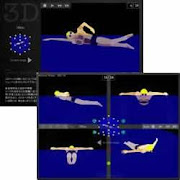




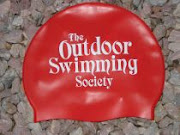

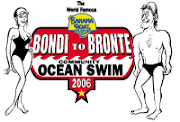


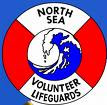
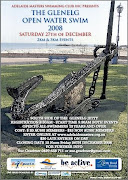





13 comments:
So many excellent choices and surprising selections. Makes it practically impossible to just vote for 3.
It's always an education to read your entries. However, I expected to see these two listed among the greatest moments of open water swimming:
Philip Rush's record triple crossing of the English Channel in 1987.
Greta Andersen's two-way at Catalina in 1958. The first double-crossing of any channel.
We knew we would miss many in our effort to post a mix that covered everything from short races to long solo swims. You are right - Greta Andersen SHOULD have been on this list. We sincerely apologize. We knew about Philip's triple crossing - but although he was REALLY fast - Erikson did it before him. However, your two selections are very justiable and we regret not including them in the list. Hopefully, people will vote for OTHER!
Greta Anderson's exploits and Philip Rush's epic swim is now posted, although we regret votes for them will have to be submitted by voting for OTHER
Steve, what an awsome collection of inspiring swims and events! I have voted.
Happy New Year to you.
Kind regards.
Hoffy.
Can I just state that immense though Shelley Taylor-Smiths record was in 1991 she didn't win 6 out of 9 marathon swims against men. She in fact won 2 - The Atlantic City marathon and the inaugural Sydney Marathon. However, because she had also had numerous second and third places she amassed enough ranking points to win overall. She won it dramatically on the last swim in Sydney, comming from behind to overtake the favorite David O'Brien to win by four minutes.
Whoa, what happened to Marilyn Bell? She won the 1954 Atlantic City professional race, and became the first person to swim across Lake Ontario (51km, beating Florence Chadwick). She was 16 at the time. I believe it was the longest marathon swim in the world.
http://www.soloswims.com/bell.htm
What about Vicki Keith? She swam the English Channel butterfly, Catalina butterfly, did the first double-crossing of Lake Ontario, and did 80.2km of butterfly over 63 hours.
http://en.wikipedia.org/wiki/Vicki_Keith
Thank you very much for pointing out the Shelley Taylor-Smith's record in 1991. My initial research and information was incorrect. Shelley confirmed the following information about her 1991 season:
1st: 20K All Saints Bay Swim, Brazil
4th: 63K Rio Coronda Marathon Swim, Argentina
5th: 32K Capri-Naples, Italy
2nd: 42K Lac Magog, Canada
2nd: 40K Lac St-Jean, Canada
1st: 35K Atlantic City, USA
5th: 25K Pan Pacific Swimming Championships, Canada
1st: 30K Sydney Harbour, Australia
Shelley set 9 new race records with 2 firsts out of 9.
Thank you very much again.
Vicki Keith's incredible exploits and charity campaigns and Marilyn Bell's inspirational swims are now noted in the lists. Thank you very much for reminding us of these special women.
What about Annette Kellerman?
She had some impressive swims in the 1900's in the Thames and the Seine. Long before other women were doing distance swims.
jake
Jake, you are absolutely correct about Annette Kellerman. She was a pioneer and remarkable individual. We have written about her in other websites, but we will bring her story to 10Kswimmer.com. Are there any particular moments in her colorful life that stand out in your mind?
winni2078 0807
Juicy Couture is a fashion [url=http://www.rolexwatchesblog.us/]rolex watches[/url] brand which was founed in 1997 form California, [url=http://www.omegawatchesblog.us/]omega Watches[/url] by Gela Nash-Taylor and Pamela Skaist-Levy
You need to add Bert Thomas' crossing of the Straights of Juan Fuca in the 50s. The water there is colder (40s) than almost all of your other listed swims.
Post a Comment